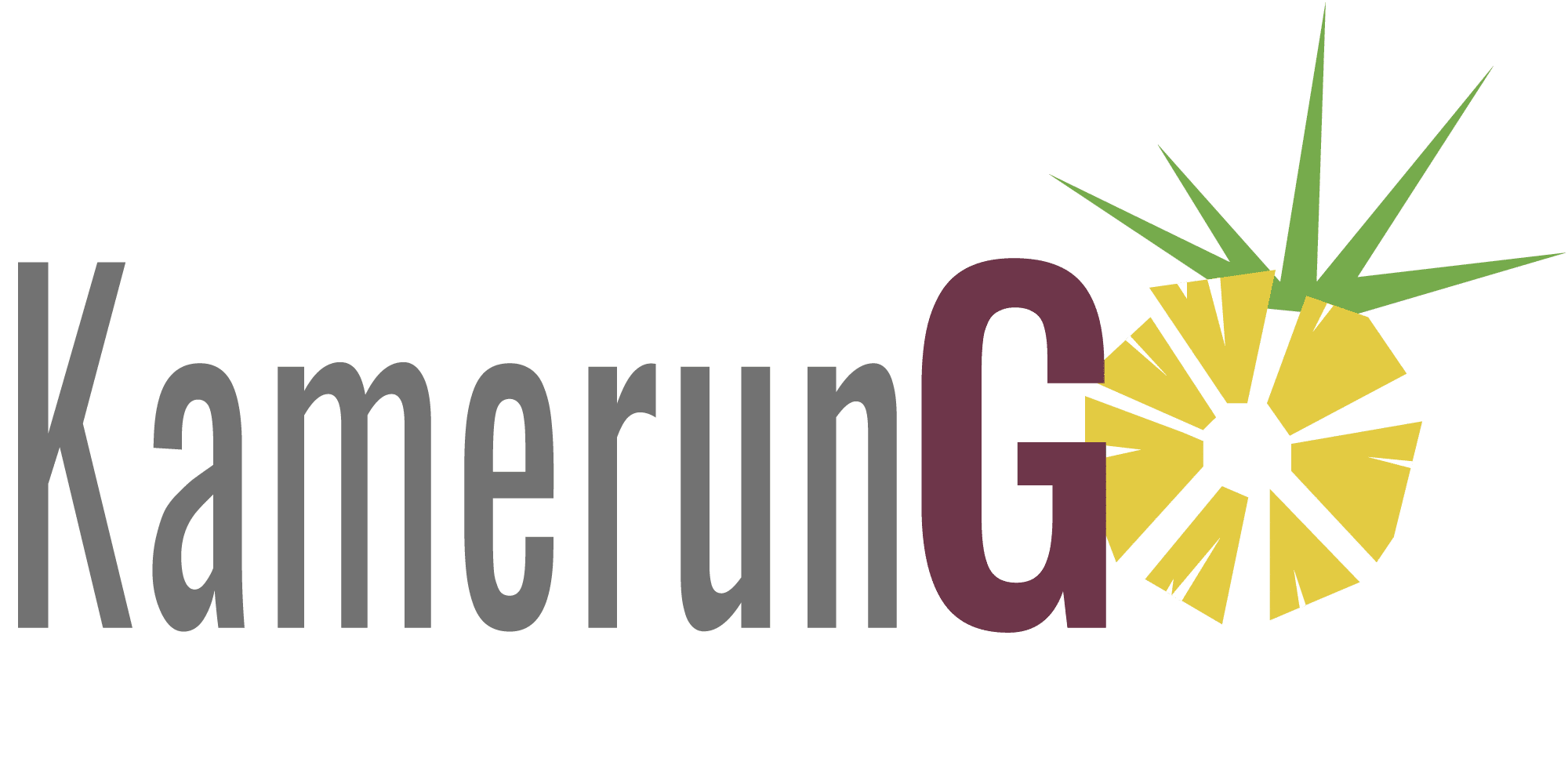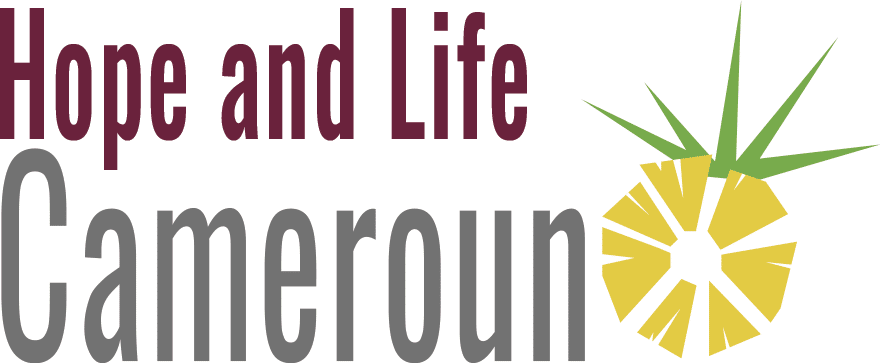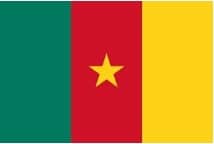
by Jana Arnold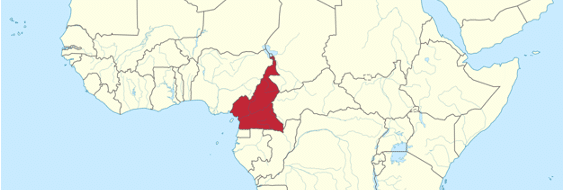
Geography and Nature
With an area of 475,440 km 2 Cameroon is about 10 times the size of Switzerland or 1.3 times the size of Germany. The country is located in Central Africa and has the shape of a pointed triangle. It is bordered by Nigeria to the west, its eastern neighbors are Chad and the Central African Republic, and to the south it is Gabon and Equatorial New Guinea. If you set off on a journey from the Atlantic coast to the “duck’s beak” in Lake Chad, you will encounter a variety of different landscapes and climates over 1200 kilometers.
Coastal region
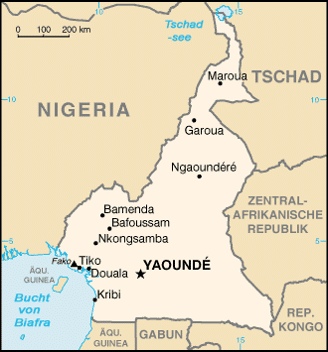
Map of Cameroon
Image: CIA World Factbook, Wikimedia Commons
The south-western part of the country, which borders the Atlantic, has a rainy tropical climate and warm temperatures all year round. This is where the port city of Douala is located, in whose agglomeration is also the health center that CameroonGO! opened in 2020. Further south, the Sanaga flows into the Atlantic, the longest river in Cameroon at almost 1,000 kilometers long. It forms a delta with countless floodplains and lagoons. If you follow the coastline southwards, you will come to the seaside resort of Kribi with its palm-lined sandy beaches. If you follow the coastline, you will see the mighty jungle of Cameroon, which often extends to the Atlantic coast.
Rainforest areas
The large rainforests of Cameroon are located south of Yaoundé, the capital of Cameroon. The jungle giants and the great biodiversity are preserved through protected areas, reserves or national parks. The Congo Basin is home to the largest contiguous rainforest area in the world after the Amazon. This includes the Lobéké National Park in the south of Cameroon. Unfortunately, illegal logging and poaching do not stop at these protected areas. Outside the protected areas, overexploitation and deforestation are the norm – you mainly come across sparse forest interspersed with plantations.
The Amadoua Highlands
As you move further inland, the rainfall becomes sparser and the temperatures warmer – we are in the humid savannah. Beyond the forest areas, the landscape rises from 600 to 1200 meters to the Cameroon Line, a volcanic mountain range. You soon arrive in Ngaoundéré, the center of the “water castle” of Cameroon, where many rivers originate. Further north, in the Bouba Ndjida National Park southeast of Garoua, the green of Central Africa meets the yellow of the desert. Here we are in picture-book Africa: hilly savannah landscape, tall elephant grass, groups of bushes and small deciduous forests. The well-known big game such as giraffes, lions and elephants are also native here and are protected as best as possible from poachers by the rangers.
Subtropical mountain zone
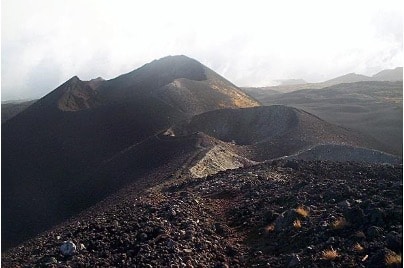
Crater on Mount Cameroon
Image: Amcaja, Wikimedia Commons
Before we head to the northernmost and driest part of Cameroon, we take a look back to the other end of the Cameroon Line. This stretches to the Bight of Biafra and includes the highest mountain in West Africa: Mount Cameroon (4070 m above sea level). The Bakweri people who live at the foot of the mountain also call it «Fako», peak, or «Mongo ma Lobo», mountain of thunder. because it is one of the oldest active volcanoes on earth. The last eruption occurred in 1999. Since 2009, the fertile and species-rich area surrounding the mountain has been protected by a national park. From mangrove forests on the coast to tropical rainforests, treeless savannahs and finally barren lava fields, everything can be found on the highlands around Mount Cameroon.
The North
To our last stop: the northern tip of Cameroon. The Adamoua Plateau drops steeply towards the north of Cameroon and ends in a dry savannah. This is initially dominated by a few volcanic inselbergs, but turns into a flat, sandy landscape further towards Lake Chad. Some rivers carry water all year round, while many mayos – dried-up riverbeds – only fill with water in the rainy season. We have now arrived in the Sahel, the transition zone from the humid savannah to the Sahara desert, and only very robust plants such as acacia or millet can withstand the hot, dry climate.
The wildlife of Cameroon
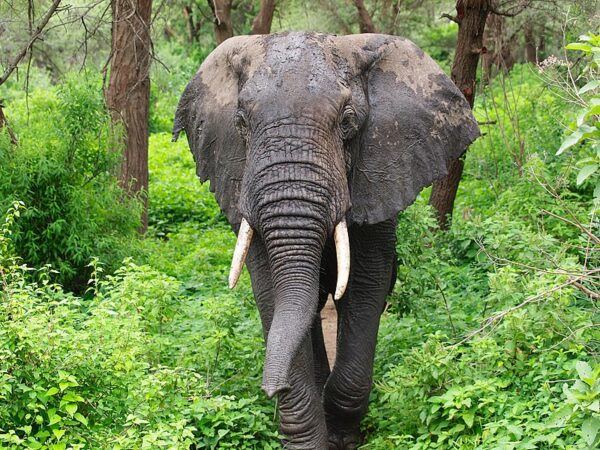
Forest elephant: It is smaller than its African relative and has straight tusks.
Image: John Mackenzie Burke, Wikimedia Commons
The diverse habitats that Cameroon has to offer encourage an extraordinarily rich biodiversity. This can be preserved above all in the protected areas, because poverty drives people in many parts of the country to hunt wild animals. Primates and forest elephants are particularly threatened. The latter are hunted and killed for their ivory, which is still sold in Chinese markets in particular. However, if species protection is successful, the diversity is enormous: gorillas, chimpanzees and many other primate species live in the rainforest national parks. 400 species of birds are counted in Korup National Park alone, including endemic species such as the small Cameroon eye-witness, which lives nowhere else. Forest elephants, various antelopes, panthers and buffalo also live in the dense forests of Lobéké National Park.
Further north, the diversity of mammal species decreases drastically, except in a few national parks. The Waza National Park is one of the last safe havens for giraffes and savannah elephants. Lions can also be found in the protected areas of the north. The hippo population has been drastically decimated, and cheetahs and black rhinos have completely disappeared from Cameroon since 2003. The Goliath frog, which can grow as big as a human baby and weigh up to 4 kilograms, is also hunted by the population.
Nature conservation and preservation of biodiversity

Lava beach with black sand in Limbe.
Image: Bernard Dupont, flickr
The beauty of the flora and fauna in Cameroon is undisputed. This makes it all the clearer how worthy of protection such species-rich areas are. Unfortunately, this is a difficult task due to corruption and poverty in the country. Nevertheless, environmental organizations such as the WWF are working tirelessly for sustainable development in Cameroon. By supporting such organizations, an important contribution can be made to protecting nature in Cameroon.
More information about WWF’s work in the Congo Basin can be found at:
https://www.wwf.de/themen-projekte/projektregionen/kongo- Becken/staat-und-meaning Sources:
Gartung, Werner: Travel know-how Cameroon. Handbook for individual discovery. Bielefeld, 2015.
by Poser, Fabian/Kah, Agnès: Reading tour of Cameroon. In the face of the gorilla. Vienna, 2017.
